How to Reset USB Ports on Windows 11/10/8/7?[Pictures Tutorial]
"i can’t reset my pc because it says i have a problem but my usb ports have just stopped working now. i'm nor sure what to do. please help" - from Microsoft Community
"Can you refresh a USB port to restart a USB device? I sometimes have to re-plug my keyboard USB since it freezes so it needs a reboot." - from Reddit
There are times when a USB port gives up on you while working on a PC or a laptop. If unfortunately, your system is unable to detect the problem with these external storage devices, you will need to troubleshoot the problem by finding out the actual cause yourself. Now that you have come to this article, don't worry, you will find the most common causes on how to reset USB ports on Windows 11/10/8/7 in the following content.
Since the USB ports are important external devices that are useful in transferring digital files to and from the laptop, or supplying electric power across the USB cable for the USB devices attached to your laptop or PC, it's vital for you to firstly understand how to reset USB ports in Windows or how to reset passwords where you get stuck while doing that important office work.
What Are USB Ports?
USB stands for Universal Serial Bus. USB ports help in short-distance digital data communication for simply transferring files from one device to another. They also help in supplying electric power across the cable to devices, like connecting your camera to the laptop for downloading those memorable pictures from your last holidays!
Quick Way How to Reset USB Ports in Windows.
Here's a quick method you may want to try. To simply reset the USB port you need to:
- Uninstall the device by right-clicking on the USB controller and choosing the Uninstall option.
- Choose that for all USB controllers on the list and restart your computer.
- Windows will scan the system and reinstall the uninstalled USB controllers automatically, this will reset all the USB ports on your device. If this method doesn't work for you, then scroll down and see more detailed methods.
How to Reset USB Ports on Windows 11/10/8/7?
Here are some basic yet effective ways in which the USB ports can be reset to resolve the USB port malfunction.
Method 1: Restart Your Computer
Tried restarting your Laptop or PC? Sounds simple, but this is a very effective way of resolving many technical problems.
- Click on the Start image on the bottom left corner of the main window of your Laptop or PC.
- Click on the bottom icon and choose restart.
- Wait for your device to shut down and restart on its own.
In all likelihood, this basic simple magical mantra can get your USB port to start working again!
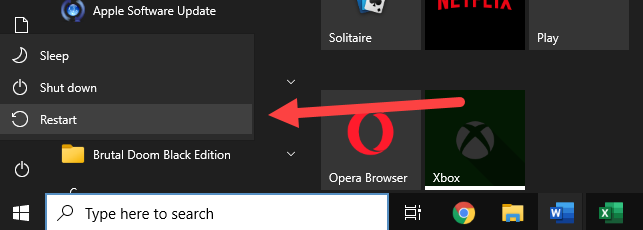
Method 2: Use Device Manager
Device Manager is another way of reset USB port windows 10. The steps and images are mentioned below for easy understanding.
- Right-click on the windows icon Taskbar and select Device Manager from the list.
- Find universal Serial Bus controllers on the device manager and expand it.
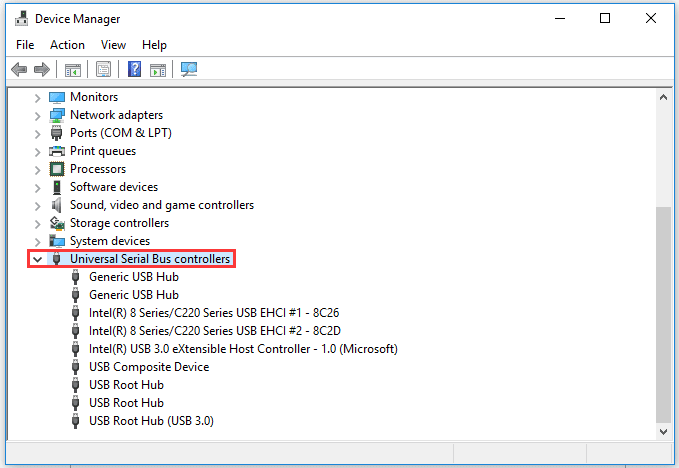
- To uninstall the USB controllers, right-click on one of the USB controllers from the list and choose to uninstall. Do the same action for all the USB.
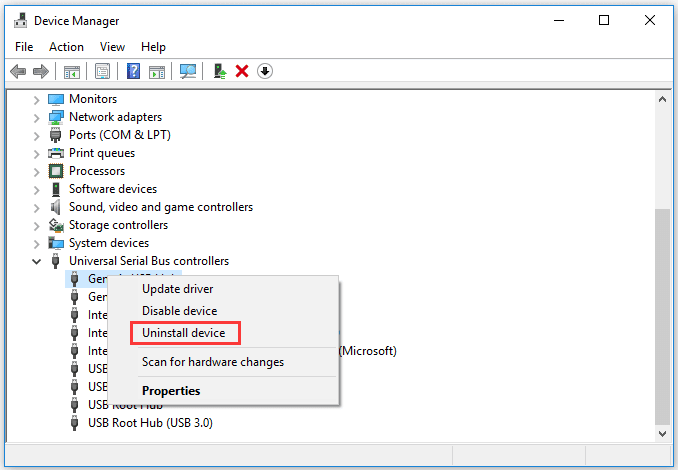
- Now restart your computer as explained earlier. While the computer reboots, Windows will scan the system on its own and will reinstall all the USB controllers which you uninstalled.
This process will reset your USB ports and will resolve the issue if this was the cause.
Method 3: Use Registry Editor
Another method of resetting the USB ports is by using the Registry Editor. USB ports can easily be enabled or disabled using this method. Explained in easy steps here:
- Go to the start menu, choose the Run dialog box or use the short key “Window+R”, this will open the RUN window.
- To open the Registry Editor type "regedit.exe" and press enter.
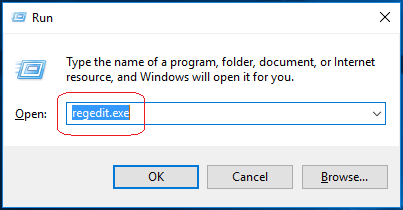
- Once the Registry Editor Window is opened Navigate the path mentioned below:
HKEY_LOCAL_MACHINE > SYSTEM > CurrentControlSet > Services > USBSTOR
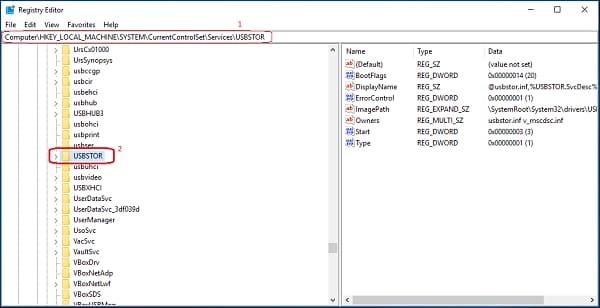
- Click on the start option to open the "Edit DWORD (32-bit) Value" Window.

a) The "value data" needs to be changed to "4" and then click OK to Disable the USB ports or drives.
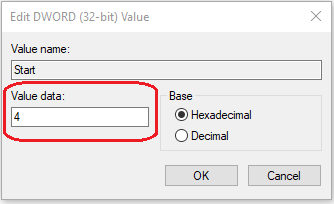
b) On the other hand the "Value data" needs to be "3" and click OK to enable the USB drives or ports.
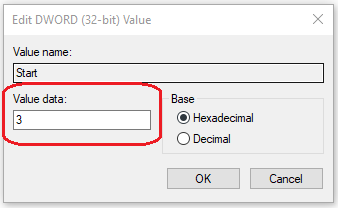
- Last but not least reboot your computer to see if the USB port is up and running again.
Method 4: Disable and Re-enable the USB Controller
Windows operating systems automatically power some of the USB devices down which haven't been used for a substantial period of time, this is to preserve the battery power and to increase the shelf life of USB devices. If your last USB device malfunctioned in windows 10/8/7, this may cause the devices not to show up due to certain settings. These settings need to be changed in few easy steps by disabling this feature.
Step 1: Open the Settings app and go to System > Power & sleep > Additional power settings.
Step 2: Open Start Menu in the older version of Windows, type power sleep in the Start Search box, and then click Change after which the computer sleeps.
- Click Change plan settings and then select Change advanced power settings.
- Expand the USB Settings group.
- Expand the USB selective suspend settings group.
- Select the drop-down menu and then select disabled.
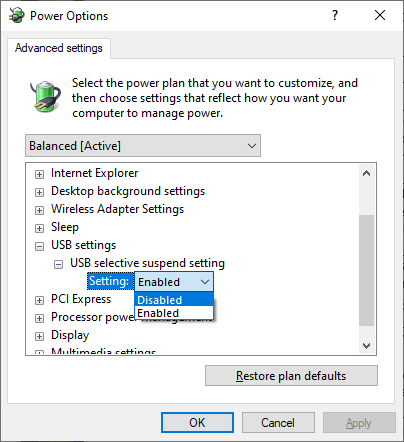
Method 5: Use Windows Troubleshooter
The latest versions of Windows Operating Systems come with an important feature of USB error troubleshooting tool, accessing these is just a click away, explained stepwise below:
- Right-click on your USB drive and launch File Explorer (Windows Explorer in Windows 7)
- Select Properties.
- Switch to the Tools tab and click the Check button.
- Select the Scan and repair drive option.
- Wait for Windows to find and repair any errors.
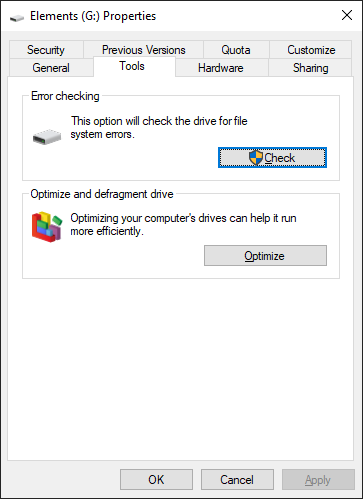
These are all 5 solutions for you to reset USB ports. The steps are very clear with tutorial images, so you can try by yourself very easily.
Moreover, as a bonus tip, the next section will also teach you how to recover lost data on your PC. Let's move on.
Read More: 4 Ways To Format Windows 7 Effectively
Reasons Why USB Ports Don't Work on Windows 11/10/8/7
If you are a beginner and not very familiar with USB ports, before you reach the 5 best methods to how to reset the USB ports, you need to know the facts which cause USB ports don't work.
You may be curious about the reasons for your USB ports' corruption. Check if you hit the following ones.
- Invalid Software and operating system settings.
- The computer has a virus that interferes with the working of the USB port.
- Hardware issue: where the USB port is physically damaged or rusted.
- Connecting the wrong USB extension cable to the port can also be the cause.
- Sometimes, previously connected devices could be defective, so even after disconnection, your laptop may not detect the new device.
Now you will see how you can troubleshoot by identifying the actual cause and rectifying the problem. Let's move to the problem-solving part.
Bonus Tip: How to Recover Data from USB Flash Device After Resetting USB Ports?
Now you are confident that by using any of the above methods you have been able to reset your USB port they are back on track. Sometimes when fixing the USB, it disconnects and scrapes off your data completely.
At this stage, the important issue remains on how to recover your lost important data in the process. But you can sit back and relax while our sophisticated tool like Wondershare Recoverit Data Recovery does its job seamlessly!
Its dynamic nature can recover the lost files from hard drives, SD cards, and even USB drives among other removable devices.
Recoverit Data Recovery - Best USB Data Recovery Software
- How to Recover in different scenarios: Recoverit Data Recovery is a lifesaver since it can recover your important files from formatted data, trash recovery, device recovery among many other scenarios.
- Recovers over 100 Types: Various types of files can be recovered using this versatile Recoverit Data Recovery. May it be graphics, video, audi,o or any other files.
- Bonus Preview Option: This super amazing tool lets you preview any recoverable file before you finish the recovery process.
- Advanced Recovery: Sometimes, after recovery, you might get the file back but in corrupted format. So Wondershare Advanced Recovery allows to fix the corrupted files and get them back to working condition.
User Guide - How to Recover Lost Data:
Step 1: Connect the USB flash drive and select it:
Insert the USB flash drive into your computer, it will take a few seconds for your computer to recognize it.

Step 2: Scan the USB flash drive:
The system will start scanning the external device and collectively it will trace the lost files after a while. As per your requirement, you can either pause your scan process or continue doing it.

Step 3: Preview and recover:
After the scanning is complete, it will show the list of recoverable files. The preview feature will come into action now when you can see and decide which important files you want to recover. Hit on the recover button and let our Recoverit tool take care of the rest.

The Bottom Line:
With these simple methods and steps, you can try to reset USB ports for Windows 10/7/8 with ease. As explained, troubleshooting with these ways will more than likely resolve your issues. However, in case none of these methods work, there is a possibility that the hardware of your USB port might be faulty and will need fixing.
Whatever may be the issue, once resolved, it will be wise to consider the Wondershare Recoverit Data Recovery tool to recover those important files that you lost during the process.
Whether they were the memorable pictures from your pre-covid Holidays or important work files, the multi-functionality of this Wondershare tool is sure to give you a sigh of relief! Visit the Recoverit for more products to keep your important data safe!
People Also Ask
-
How can I reset my usb ports?
You can reset your usb ports through several ways, including:
1. Restart the computer.
2. Uninstall the usb controllers in Device Manager.
3. Use the Registry Editor to reset the USB ports.
4. Re-enable the usb controller in Power settings.
5. Use Windows Troubleshooter to detect USB error.
-
Is there any risk to reset USB ports?
No. There is no risk to reset USB ports on your computer. You only need to reinstall the USB port drivers. It won’t cause any issues as long as the USB drivers are up to date.
USB Topic
- Recover USB Drive
- Format USB Drive
- Fix/Repair USB Drive
- Know USB Drive















 ChatGPT
ChatGPT
 Perplexity
Perplexity
 Google AI Mode
Google AI Mode
 Grok
Grok
























Eleanor Reed
staff Editor